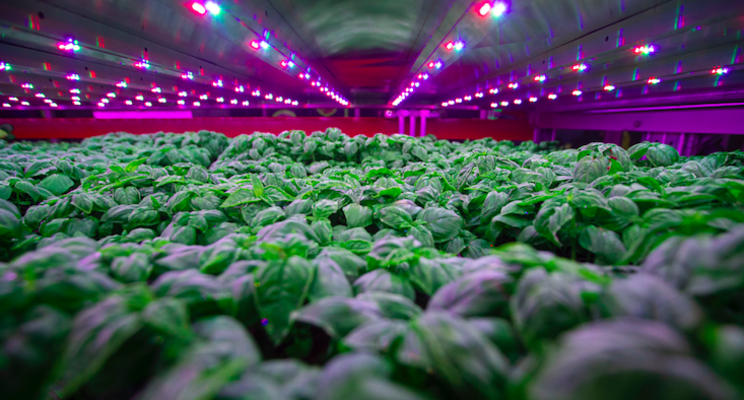Vertical farming rising to tackle global food crisis
Added on 03 March 2022

The State of Food Security and Nutrition in the World 2021 report estimated that on average, 768 million people faced world hunger globally in 2020. The high cost of fresh, healthy produce, combined with high income inequality, means that many cannot afford a healthy diet.
This is especially prevalent in Aotearoa, with almost 40 percent of New Zealand households saying they face food insecurity in the last New Zealand Adult Nutrition Survey, conducted back in 2008/2009.
A company that is answering the call to this crisis is Intelligent Growth Solutions Limited (IGS). IGS is an Edinburgh-based company that is developing vertical farming systems that may become a common sight in New Zealand in the future.
IGS made its first appearance in New Zealand with its Fieldays Innovation Award win last year in the Growth and Scale category, which recognises innovations that are seeking growth in new markets. IGS is now in the early stages of talking with interested groups in New Zealand.
IGS CEO, David Farquhar, says that vertical farming is a key element in re-thinking how we grow crops.
"On its own, vertical farming won't solve world hunger or climate change - but it is one answer, and we believe it will help in both cases."
"Ultimately, we think up to 30 per cent of the world's diet could be grown in vertical farms," he predicts.
IGS's vertical farming system uses smart technologies to grow vegetables and fruits indoors in a remote, but highly controlled environment. Seedlings are positioned on trays inside modular multi-level structures IGS calls "growth towers."
Multiple crops can be produced in a growth tower including herbs, leafy greens like lettuce and spinach, kale, broccoli, root-based crops such as seed potatoes and soft fruits like strawberries.
Vertical farming doesn't require large amounts of land, they use significantly less water, and can be placed virtually anywhere - meaning they can be located closer to the point of distribution.
"One growth tower covers about 42sqm - up to a 1000th the size of a conventional farm - and can produce 25 tonnes of food. To achieve the sa¬¬me amount on a traditional farm, you would need three to four hectares of land," David notes.
"As they use a lot less area, towers can be sited anywhere in towns and cities such as disused factory sites, and there's no reason why they couldn't be set up by traditional farmers or growers on their land."
Click here to read more.
Photo Courtesy of IGS
Source: Scoop Business
More news















